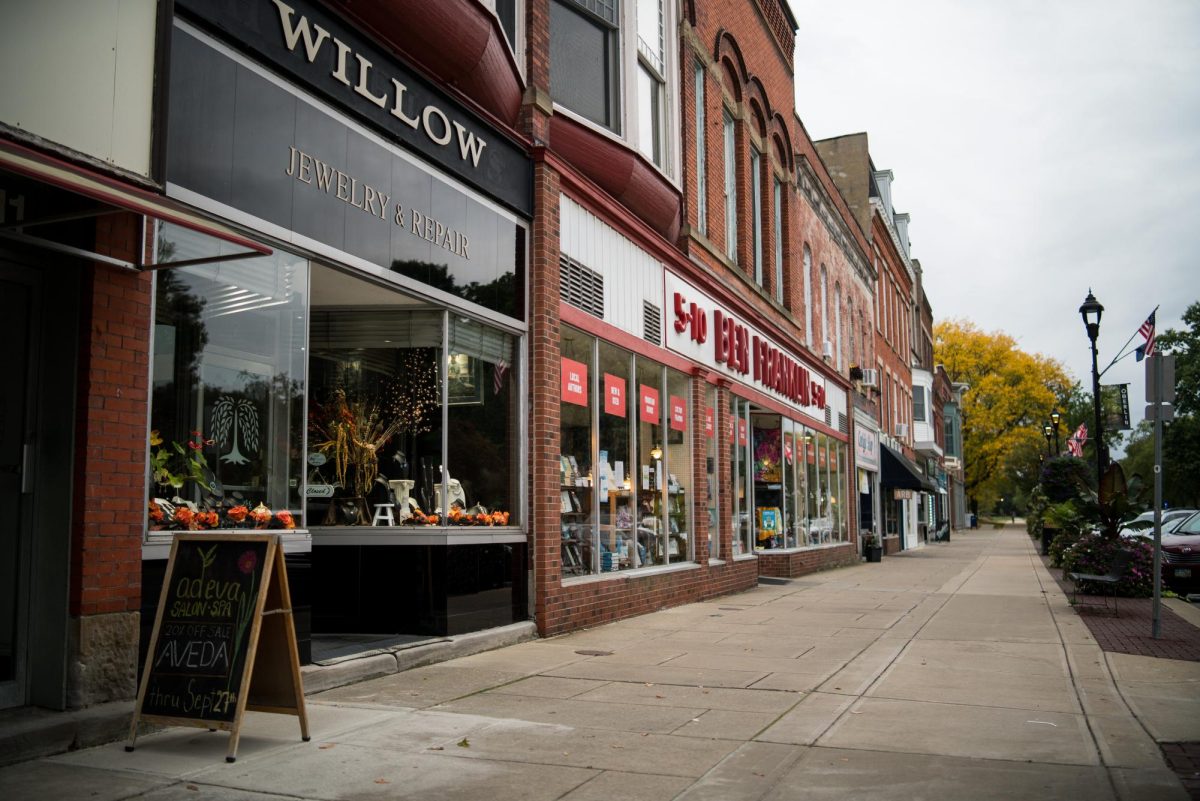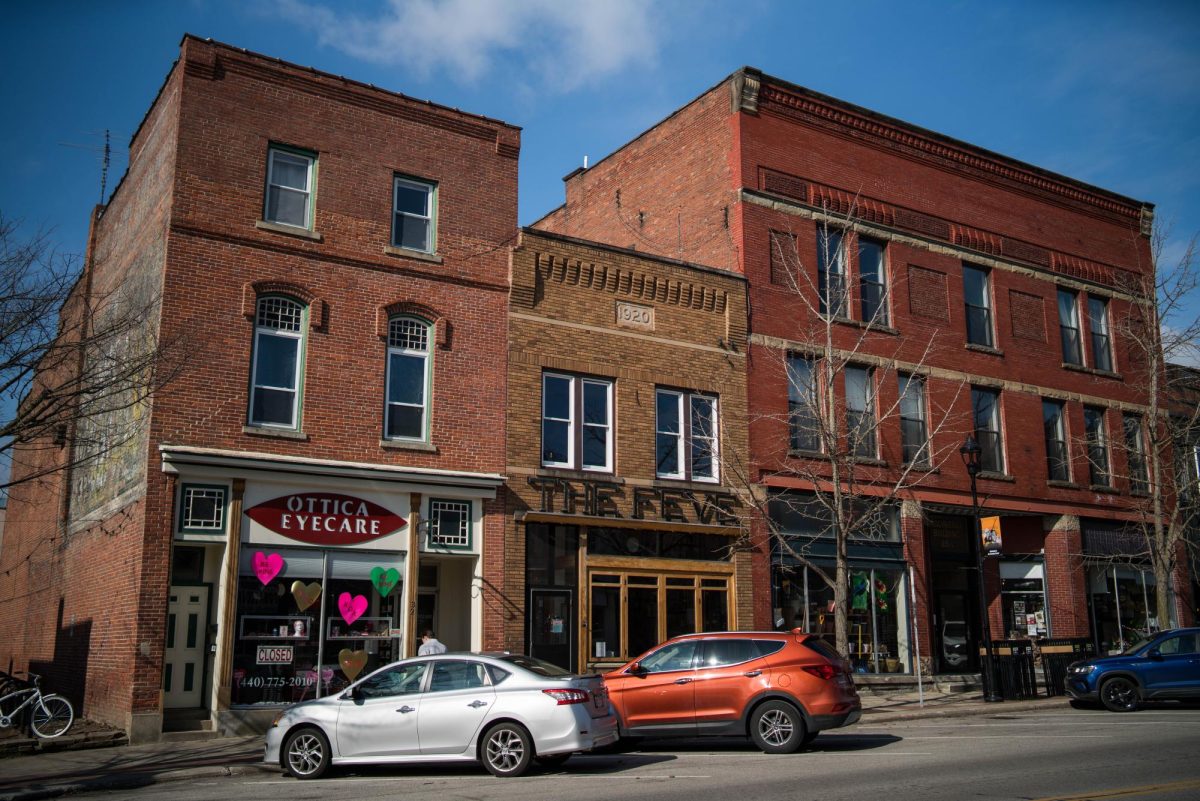The City of Oberlin held public input sessions last weekend on the new Comprehensive Plan, which is currently in development. The sessions occurred Sept. 22 and 23 at Oberlin Enrichment and Activity Center, formerly Prospect Elementary School, and the next day at the Farmers Market. The Comprehensive Plan provides a guide for development within the city. Oberlin’s current plan was created in 2005 and updated in 2011.
In early 2023, the Comprehensive Plan Steering Committee, working with KM Date Community Planning, OHM advisors, and Downtown Strategies, Inc, released a survey, hosted an open house, and held a series of small-group conversations with community members to gather public input on what citizens would like to see in the new plan. At the input sessions last weekend, the Steering Committee presented a list of goals and objectives and a preliminary future land use map based on the results of the survey and public meetings.
“All goals, objectives and action steps will be pursued under two overarching lenses: environmental sustainability and social equity,” the preliminary plan framework reads. “They overlap each goal, objective and action step in the plan, and will broadly influence City policy and decision making as the plan is implemented.”
Also in the framework, the Committee established five broad goals they aim to address through the Comprehensive Plan: “expand diversity and affordability of housing,” “continue and expand economic development,” “continue to provide quality community services,” “promote community arts and culture,” and “improve and expand communication and collaboration [between Oberlin’s government, schools, businesses, and Oberlin College].”
Kirby Date, principal of KM Date Community Planning, and Carrie Porter, director of planning and development for the City, said housing was the most common concern that community members voiced in the survey, town hall, and small groups.
“[Affordability of housing] is on everyone’s mind,” Date said. “The most important thing to them is that Oberlin’s housing be more diverse and … be more affordable and in better condition so that … a more diverse set of people can live here who would like to.”
The Steering Committee sees more diverse housing options, including multi-family residential homes, as a way to make housing more affordable and accessible. The “single-family district” distinction on the current zoning map is eliminated in the new future land use map, replaced by “suburban residential” and “traditional neighborhood”. According to the map, “traditional neighborhood” is “characterized by residential communities with a range of small-lot detached or attached single family types with multi-family options” while suburban residential maintains “the fabric and character of existing suburban Oberlin residential neighborhoods and subdivisions,” yet can allow “diverse housing typologies to maintain and grow the Oberlin fabric.”
“Right now, the city doesn’t have a multifamily zoning district, so I think that’s an issue that we’re going to tackle here very soon,” Porter said. “Right now, if you want to do any kind of multifamily development, you have to go through the plan development process, which is more lengthy than a regular rezoning process.”
City Council Member and Steering Committee Chair Ray English used the term “flexible residential” to describe the Committee’s vision for residential areas.
“The comprehensive plan survey indicated that residents want Oberlin to expand the quantity and diversity of housing,” he said. “Suggested housing types include things like tiny homes, accessory dwelling units, cluster homes, duplexes, and quadplexes. Our residential zoning focuses mainly on single-family homes and basically does not allow the diverse options that are being suggested by our community. That’s why we need more flexible residential zoning.”
Attendees gave specific suggestions on the future land use map, as well as feedback on the general ideas laid out in the framework. Date said that community input is essential to the process because city planners can never completely anticipate the particular interests of citizens.
“One of the things that came up — which is exactly what we want — is people pointing things out to us and saying, ‘Well, you know, that’s not really a conservation area there, that’s a farm field and it’s a good place to put housing,’ or … ‘This bikeway over here isn’t really a bikeway, it’s all gravel and it’d be great [if it] started to serve a real use in the community,’” Date said. “We got a lot of very concrete ideas from people.”
Economic development was also an important issue for citizens, according to Date and Porter. Date said that more economic development could potentially decrease the tax load on citizens.
“One of the other big concerns … is that taxes are very high, and taxes plus the higher cost of housing together is what is squeezing people out,” Date said. “So there is a wonderful understanding … amongst the folks we’ve been talking to about the connection between the need to have economic development and reducing taxes. … The more companies you have that are actively thriving in Oberlin [means] … those companies [and] those employees are paying income taxes to the city, which helps to reduce the need for resident income taxes.”
Some of the business development will happen south of town along the State Route 58 corridor. The land use map proposes mixed-use commercial and residential development designed to give residents easy access to nearby businesses.
“You see rural communities saying, ‘No more growth,’ ‘We don’t wanna change.’ ‘We don’t want anything new,’ ‘We don’t want new people here,’” Date said. “That’s not what we heard in Oberlin. We heard, ‘We want Oberlin to grow.’ We know that’s important for Oberlin’s sustainability. That’s a community that really is looking realistically at the future. There was a condition on that, though, which was, ‘We want to grow, we understand we need to grow, but we wanna do it right. We do not wanna sprawl, we do not want more highway commercial.We want more of what Oberlin is now.’”
The Steering Committee will use the feedback from the public input sessions to create a first draft of the Comprehensive Plan that will be presented to the Oberlin Planning Commission and City Council. City Council is scheduled to vote on approving the plan by the end of the year.
Citizens still have an opportunity to give their input through a survey on the Oberlin Comprehensive Plan Website.







